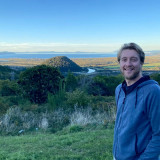Collaborative modular scenario development for caldera volcanic risk management: Caldera volcanoes in Taupō Volcanic Zone, Aotearoa – New Zealand
Presentation
Authors: R. Calderon, T. Wilson, G. Leonard, S. Beaven, T. Robinson, J. Hayes, C. Wilson, S. Barker, F. Illsley-Kemp, Calder Advisory Group (NZ)
Event: Cities on Volcanoes
Summary: The conference presentation presents a co-produced modular scenario framework using a collaboration platform for designing caldera risk management strategies.
Caldera volcanoes provide highly challenging conditions for risk management. While they can produce rare but very large and explosive eruptions (VEI 6 or above) with catastrophic potential, they more frequently undergo periods of caldera unrest, possibly leading to smaller eruptions, with potential impacts to society from ground shaking and deformation. This contributes significant uncertainties to volcanic hazards, risk assessment, risk management, and communication planning.
This research presents a co-produced modular scenario framework using the Taupō Volcanic Zone in Aotearoa - New Zealand, as a case study, in which the Caldera Advisory Group (CAG) forms a collaboration platform for emergency managers, volcano scientists, and iwi/Māori representatives dedicated to designing caldera risk management strategies. The CAG closely collaborates with the ECLIPSE programme focused on caldera research.
The collaboration identified that a suite of scenarios would be useful in representing the complexities in caldera volcanic activity and their associated potential impacts. The modular scenario development addresses future uncertainties in caldera volcanic activity, such as caldera unrest and eruptions, through a conceptual model of caldera volcanism, defining stages that represent risk management complexities. The scenario framework consists of three modules: caldera unrest (module 1), transition unrest (module 2), and eruption (module 3). The modules encapsulate a suite of sixteen scenario sequences as examples representing various facets of caldera volcanic activity, providing credible event progressions based on historical and geological data and using storylines, narratives, and scenario formats. The sequences might be combined into longer, more complex sequences, adapting to different end-users’ purposes and goals.

Graham Leonard
Volcano Geologist

Simon Barker
Geologist